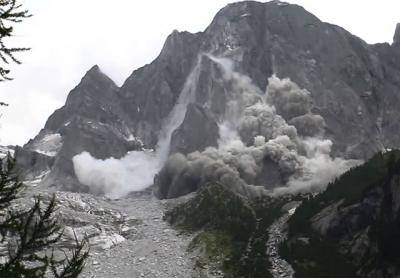The Poison in Your Laundry
The Poison in Your Laundry
Have you ever wondered what’s in that bottle of detergent or softener you pour into your washing machine, or on that fragrant dryer sheet you throw into your dryer? Well, it’s time you did, because the truth about your laundry products might make you change your laundry routine forever.
Many of the common laundry detergents, softeners, and dryer sheets that sit on our supermarket shelves, like Procter & Gamble’s popular original Tide, and fragrance-free Tide Free and Gentle, contain high levels of 1,4-dioxane, a carcinogenic pollutant. Lesser amounts of the same contaminant were detected in Bounce, both original and Free and Gentle. It’s no wonder that this carcinogenic contaminant has been found in 39 Long Island water districts, many of them in the Town of East Hampton. It’s a shame and a disgrace that Procter & Gamble has consciously chosen not to reformulate these toxic products that people use every day.
Neither New York State nor the federal Environmental Protection Agency regulates dioxane in drinking water. According to Citizens Campaign for the Environment, “Once this chemical flows down your drain, it travels into our groundwater through our septic tanks and cesspools,” before flowing “outward into our surface waters or downward into our aquifers, which are the sole source of Long Island’s drinking water. Removing it is a difficult problem once it hits the groundwater and soil.”
Not only is this toxic chemical found in laundry detergents and soaps, it’s also found in shampoos and body washes. Citizens Campaign for the Environment reports that “approximately 46 percent of personal care products, including detergents, dishwashing soaps, shampoos, cosmetics, deodorants, and body lotions, contain 1,4-dioxane.” In addition, dryer sheets, a common part of many people’s laundry routine, are laden with a multitude of toxic ingredients.
Why would you expose your skin to such dangerous contaminants? If you look on the box of those dryer sheets, you’ll discover that none of the toxic ingredients are listed. Why not, you ask? Well, the current U.S. Consumer Product Safety Commission doesn’t require it.
Dr. Anne Steinemann, an expert on pollutants and human health at the University of Melbourne in Australia, has studied the chemicals that discharge from people’s dryer vents into the air and then into our lungs and found that “there are seven dangerous air contaminants and 25 volatile organic compounds that are emitted into the air from fabric softeners and dryer sheets, such as acetaldehyde and benzene. These contaminants are not safe at any level; they are the same pollutants that are emitted from the tailpipes of automobiles. Acetaldehyde is a common ingredient used in fake fragrance blends. It’s potentially carcinogenic to humans and adversely impacts the kidneys and nervous and respiratory systems.”
Just take a bike ride or a walk through any neighborhood in East Hampton and you can smell these noxious chemicals being blown out of your neighbors’ dryer vents.
In 2016, Dr. Steinemann conducted a study that found that “12.5 percent of people blamed scented laundry products spewing from dryer vents for health issues. These included migraines, respiratory issues, skin issues, asthma attacks, and gastrointestinal symptoms.” The scary thing is that Procter & Gamble, the company responsible for most of these products, touts them as being “ideal for newborns and babies.”
What can you do? Stop buying these contaminated products. Each of us as individuals, working together as a community of concerned citizens, can make a difference. All you need to do is say no to the use of these products and purchase eco-friendly detergents instead. There are several companies, such as Seventh Generation, that have come out with healthy but effective cleaning and laundry products.
In addition, the not-for-profit organization Earthjustice recently asked residents of New York to contact Gov. Andrew Cuomo because “he promised to make protecting the public and the environment from chemical contamination a top priority.” For your health, and the health of the environment, “tell Governor Cuomo to require disclosure of all cleaning product ingredients — not just those products the manufacturers add intentionally.”
We should be holding the governor to his promise. Let him know who you are, where you live, and that you’d like transparency for everything that’s being put into cleaning products, shampoos, and body washes that are being sold in New York State.
Remember, it’s never too late to take a stand for your health and for the health of our environment.
Helene Forst is a teacher, environmental activist, and the author of two young-adult novels, “The Journey of Hannah Woods” and “Stoked — 1969.” She lives in East Hampton.


